When working with either individuals or groups of animals it is important that you are able to understand the behaviour of those animals. Therefore, it is necessary that you observe those animals (individual or groups) and record their behaviour.
The recording of their behaviour must be completed in accordance with your organisation's policies and procedures.
It is said that the study of animal behaviour can show us information into the foundation for animal training, or more generally into the area of animal care. It may also provide a very real insight into the understanding of our own human behaviour.
As you may have seen from your own past experiences with animals they share some behavioural characteristics with people, do not assume too much similarity as this can be dangerous and you may get the wrong signals. Animal behaviour is far less affected by choices reached through reasoning.
What is animal behaviour?
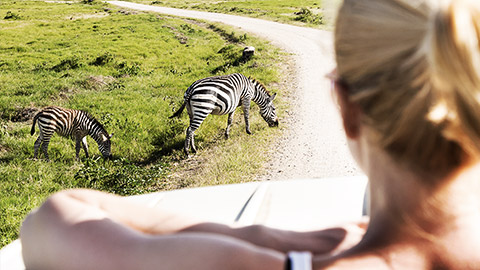
Behaviour is any externally observable activity of an animal.
Animal behaviour is the way an animal acts, or reacts, to other organisms or the environment.
In general, it includes:
- Animal activities and responses based on:
- Species, breed, age and sex of the animal
- The time of the day or night
- The breeding season
- The environment
- Normal behaviour in various contexts:
- Breeding
- Eliminative
- Grooming
- Ingestive
- Resting
- Social
- Sexual
- Maternal
- Communicative
- Shelter seeking
- Feeding
- Investigative
- Allelomimetic
- Maladaptive
Abnormal behaviour is a behaviour that is generally out of character for that individual, is an atypical response to a stimuli or event or an increase or decrease in intensity of a typically 'normal' behaviour.
- Abnormal behaviour:
- Exaggerated forms of a normal behaviour
- Repetitive patterns or actions
- Stationary, non-purposeful movements
It is important not to confuse abnormal behaviour with abnormal clinical signs of disease. For example, Lethargy or dull mentation is not a behaviour, it is a clinical sign. Clinical signs are an involuntary response to illness or injury.
This is not to be confused with abnormal clinical signs of disease and I have found when teaching this often gets mixed up. Eg. Lethargy or dull mentation is not a behaviour it is a clinical sign.
Animals may include:
- Animals commonly encountered within the industry workplace and may cover both native and introduced species
- Animals from the six major animal groups (mammals, birds, reptiles, amphibians, fish and invertebrates).
Purpose of animal behaviour
People assume that all animal behaviour is designed to support the natural survival of the animal, either directly or indirectly. This is not always the case; animals can behave self-destructively, out of habit, or purely out of boredom, just as humans can. To better understand the behaviour, we should also consider what motivates the animal to behaviour in such a manner.

There are a number of areas that can motivate an animal to behaviour in a certain way. But we will look at the two main areas that animals get their behaviour from
There are two main areas these are
- Genetics
- Learned/environmental
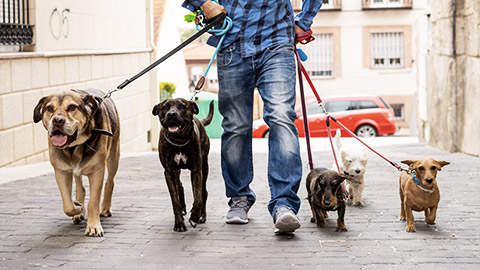
Genetics is of prime importance (i.e. inherited characteristics). Genetic characteristics are also sometimes referred to as:
- Inborn characteristics
- Innate characteristics
- Instinctive characteristics
Most animals are genetically programmed to act in certain ways in certain situations.
Innate behaviour is a type of behaviour that is controlled by genes. Watch this video to learn more.
Additional Reading:
Innate Behavior in Animals - Advanced | CK-12 Foundation (ck12.org)

Learned (i.e. Experience characteristics)
Experience may encompass terms including: “acquired”, “experiential” or “environmental”. Behaviours can be learned through the experience of interacting with the environment (which includes the people or other creatures in it), or it can be learned through personal, subjective experience (perceptions, thoughts and feelings). In the case of animals, these latter factors are usually difficult to identify.
Particularly in regard to animals, no behaviour can ever be characterised as totally instinctive or totally learned. Even though learned and genetic factors both play a role in all behaviours, the relative significance of each is variable.
Some behaviours in animals can be relatively unlearned and, therefore, almost impossible to modify. In such cases, we can determine that genetics is the major influence. Other behaviours are relatively easy to modify, thus mostly learned. In such cases, we can determine that genetics has a minor influence.
When working with animals you may come across a number of different types these may include:
- Animals commonly encountered within the industry workplace and may cover both native and introduced species
- Animals from the six major animal groups (mammals, birds, reptiles, amphibians, fish and invertebrates)
Every animal will have certain milestones that they will achieve throughout their life from birth to maturity. Every animal species will vary, so we will look at a dog here.
Neonatal period (birth to 2 weeks):

- Relatively helpless and rely completely on their mother
- Limited movement, cannot take the weight of their own bodies as yet
- Will vocalise when separated from its mother
- Feed by suckling from the mother
- Urinate and defecate by stimulation of the mother
- Kept clean by the mother
Transitional period (2-3 weeks):

- Begin to socialise by practice growling and wagging their tail
- Begin to respond to light and movement
- Play fight with siblings
- Shows an interest in semi-solid foods
- Begin to relieve themselves away from the nesting area
Socialisation Period (3-12 weeks):
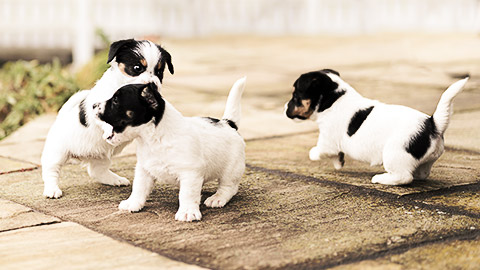
- Begin to show a startle response
- Begin to stand and walk
- Begin to bark
- Begin to wean from their mother
Juvenile Period (12 weeks to juvenile):

- Sense organs fully developed
- Growth rate slows
- Adult teeth appear
- Reaches sexual maturity
Adolescence:
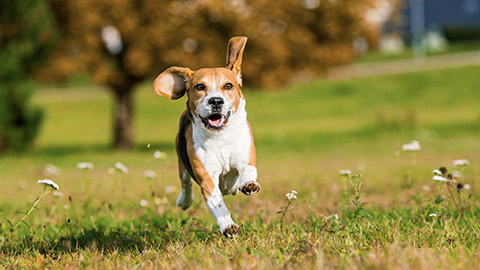
- Puppies mature very quickly, and the smaller the breed, the faster they reach maturity. In small breeds, adolescence can start as early as 5 months. In larger breeds it can start as late as 9 or 10 months, and very large breeds might not go through adolescence until 12-18 months. When your dog reaches adolescence, you might see some or all of the following behaviours:
- aggression
- plenty of energy
- very short attention span
- poor socialisation
- disobedience
- wandering
- leg cocking (males); and
- obsessive mounting behaviour
Now, lets take a look at other species:
It is important to know difference between clinical signs, abnormal behaviour and unwanted behaviour.
- Clinical signs are an involuntary physiological response to illness or injury.
- Abnormal behaviour is a behaviour that is generally out of character for that individual, is an atypical response to a stimuli or event or an increase or decrease in intensity of a typically 'normal' behaviour.
- Unwanted behaviour is a behaviour that is naturally expressed by an animal that does not fit into our human lifestyles.
Normal behaviours in cats and dogs
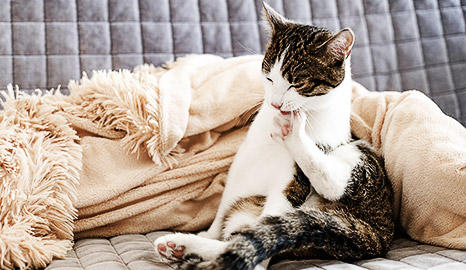
Dogs and cats as a species have normal behaviours but we can also look at breed specific behaviours.
Examples of normal behaviours in cats and dogs:
- Grooming
- Playing
- Chasing
- Sleeping
- Digging
- Chewing
- Sniffing
- Vocalising
Breed specific examples:
- Working dogs – herding
- Pointers – pointing
- exotic cats - wool sucking
Abnormal behaviours in cats and dogs
Stereotypic (repetitive behaviour patterns without goal or function) or compulsive behaviours such as circling, pacing, self mutilation (licking or biting – common in birds too with feather plucking), excessive vocalising, compulsive tail chasing, pica, coprophagia.
Unwanted behaviours in cats and dogs
Vocalising (not excessive), digging, chewing, chasing, some displacement behaviours such as redirected aggression (where a cat of a dog sees another animal outside that they want to attack but can’t get access to it they will then redirect their aggression to the next person or animal that comes near them)
Clinical signs
Self-mutilation due to pain, coprophagia due to malnutrition, stereotypic behaviours due to neurological disease, inappropriate urination due to a UTI.
It is important to keep in mind that you cannot look at a behaviour as an isolated event. You need to be aware of the history of the animal and also look at the environment. A behaviour is partially influenced by the animals surroundings and its lived experience.
Eg. Excessive vocalisation could be due to stress because the animal has previously always been with company and has now been left alone with no enrichment. A normally placid dog becomes extremely fear aggressive when approached by someone wearing a helmet. This could be because of a past trauma and the animal has been conditioned to fear this.

There are times when you are working with or assisting with animals and you will have to use strategies to encourage natural behaviour, it important that these strategies are identified and implemented and signs of stress are recognised, recorded and the possible stressors are determined.
Strategies to encourage natural behaviour, including activities and equipment
Strategies to encourage natural behaviour may include:
- Activities and equipment:
- To encourage foraging or hunting for food appropriate for species
- To provide exercise and physical fitness and dexterity relevant to animal species
- To provide opportunities to live and socialise in an environment appropriate for particular species
- To rest, hide or shelter in appropriate housing
- To reinforce the role of owner or handler in an appropriate context for the nominated species
One of the strategies that might be used is known as temperament testing, temperament testing is quite often used to ascertain whether an animal is suitable for adoption, and what type of person or home that they would be suited for example,
- "You have a dog that is in and is looking for adoption, so you test the dog’s temperament using your clinic’s testing guide (see example of guide below)
- As you are walking past the cat cages the dog reacts aggressively towards the cat, you complete the testing and everything else is good, you walk the dog back past the cat area again and again he reacts aggressively toward the cats.”
From the example above you can see that the dog is aggressive with cats therefore you would note that this dog should not be homed with cats.
Factors to consider before developing enrichment programs
The strategies you use to encourage natural behaviours in animals need to be thought out and considered well. They need to include consideration of the following:
- The cognitive ability of the animal species
- Providing age-appropriate enrichments and individual animal needs
- Social groupings and hierarchy
- Novel food and potential dietary consequences, including toxicity and parasitic infection
- Safety of objects and infrastructure
- Introducing new enrichments – observing animal reactions
- Breed specifications e.g., social, herd, mentality and working
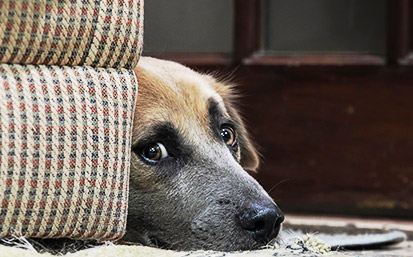
Signs of stress
It is extremely important that you can also identify signs of stress, as this could indicate that the animal is unwell, and, therefore, may react in a different way to normal:
Signs of stress may include:
- Aggressive behaviour
- Destruction of equipment or habitat
- Inappetence
- Over-stimulation of animal
- Repetitive actions
- Self-mutilation
- Subdued behaviour
- Trembling
- Vocalisation
The animal may show signs of stress whilst in the cage but once outside is completely different and relaxed, this would indicate that they don’t like to be in confined spaces, etc…
Abnormal behaviours in animals - Please refer the links below to know more about abnormal behaviours of -
It is extremely important that any abnormal behaviour which might indicate less than optimum physical and behavioural well-being MUST be reported to a supervisor (senior nurse), manager or other person in authority.
This will mean using the facilities communication procedures and systems, and technology which will be relevant to your organisation and work responsibilities
It is important that you learn how to:
- Recognise
- Respect
- Respond
It is important that you learn how to read the body language of animals, as this is crucial to the handling of the animals in a safe and responsible manner.
By tapping into your ability to empathise and learning to recognise the signs of stress, boredom, fear and anxiety, you can utilise your understanding of behaviour as a key component of restraint, treatment and diagnosis in any setting.
Keeping the animal as calm and as happy as possible makes their experiences positive.
You should watch the animals for any abnormal behaviour which may indicate a less than optimum physical and/or behavioural wellbeing must be reported.
What is abnormal behaviour, this includes:
- Exaggerated forms of normal behaviour:
- Non-stop barking
- Constant digging
- Repetitive patterns or action:
- Pacing in straight line or figure eight patterns
- Restlessness
- Stationary, non-purposeful movements:
- Head tossing
- Swaying
- Self-mutilation

